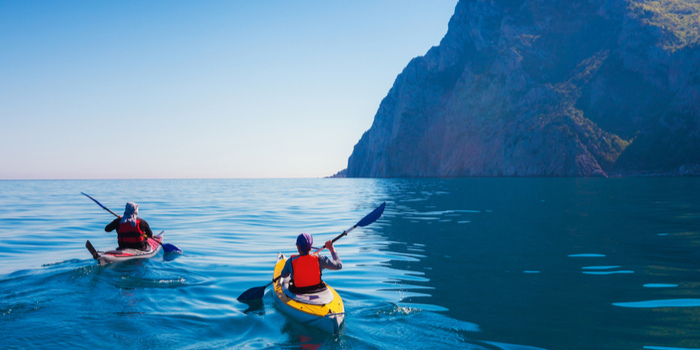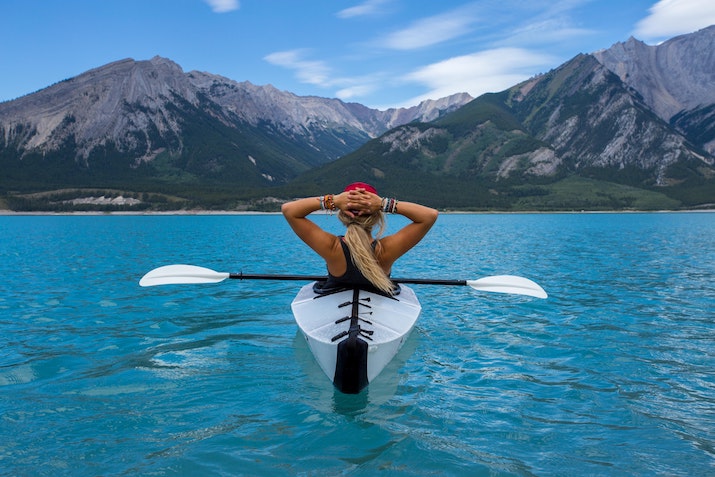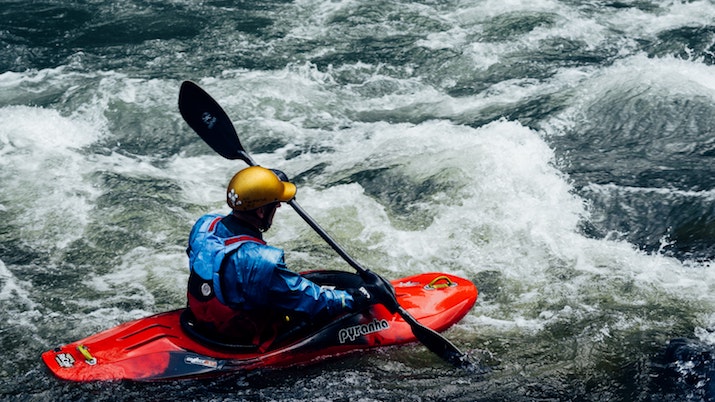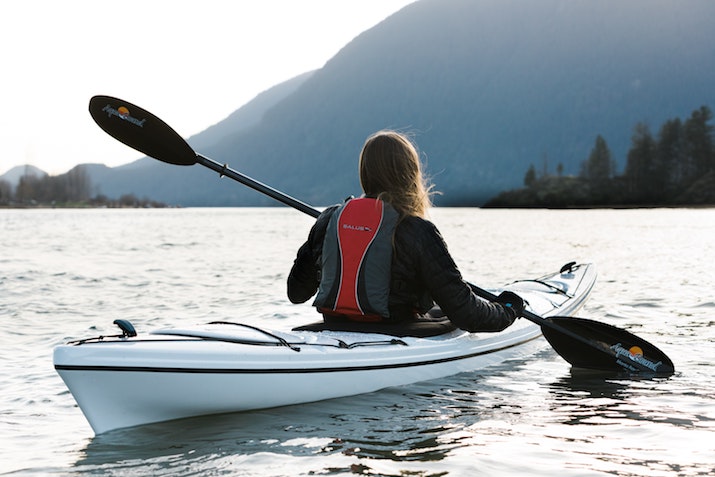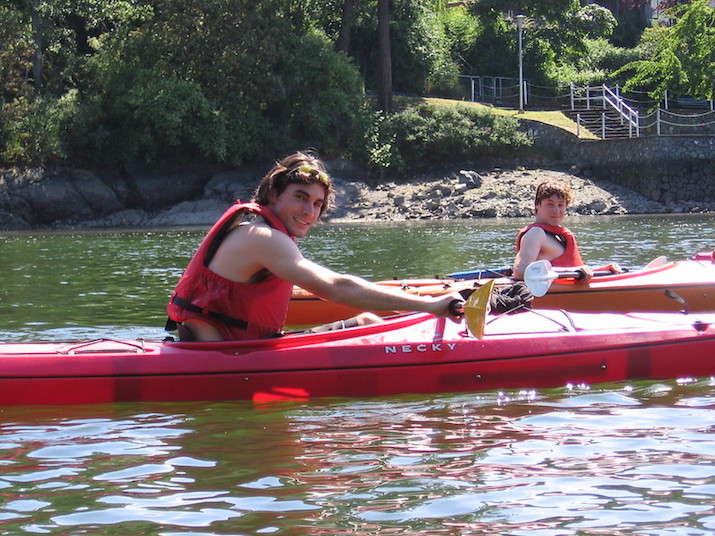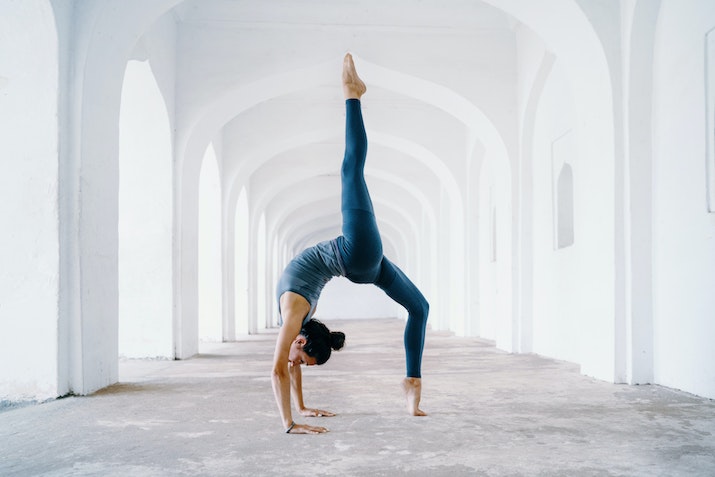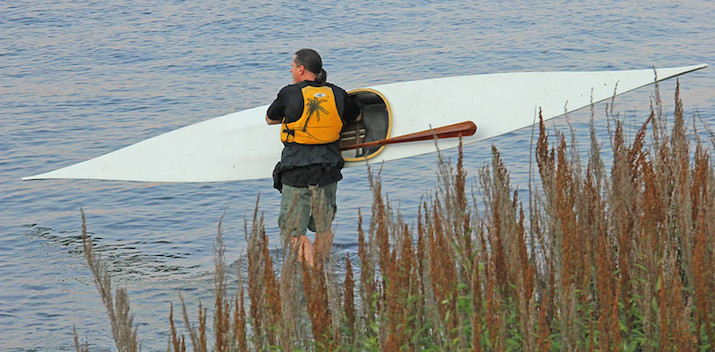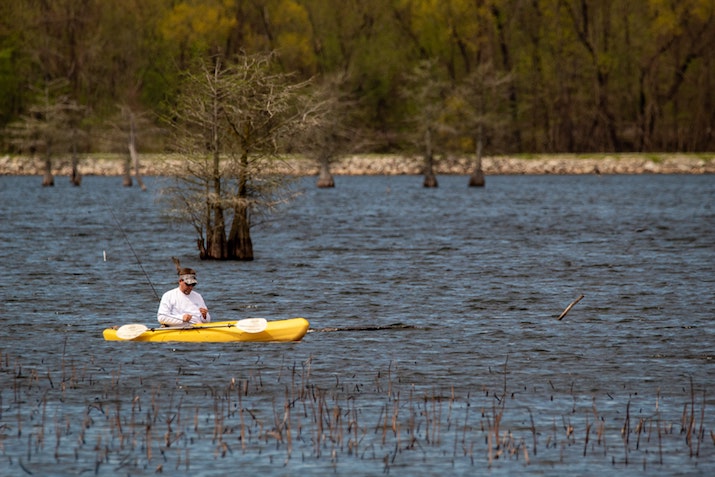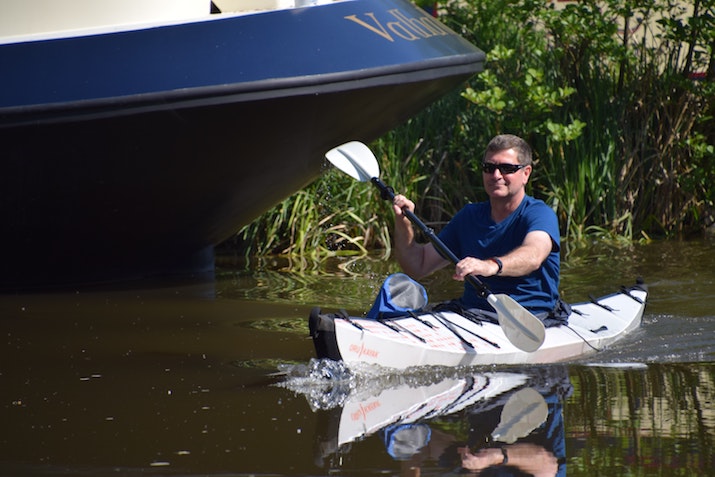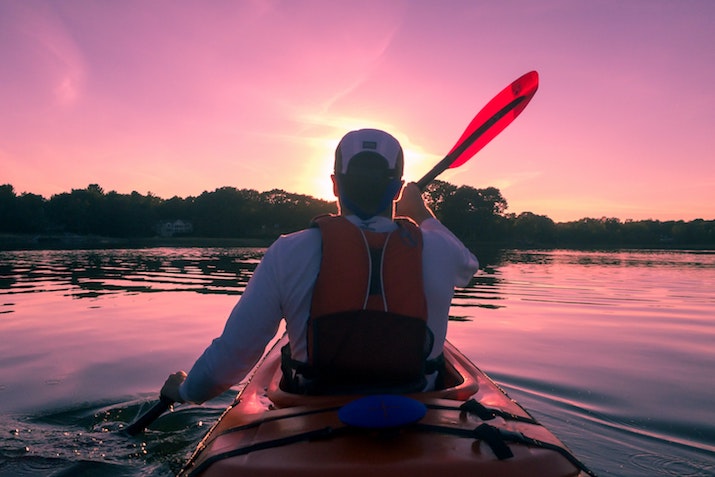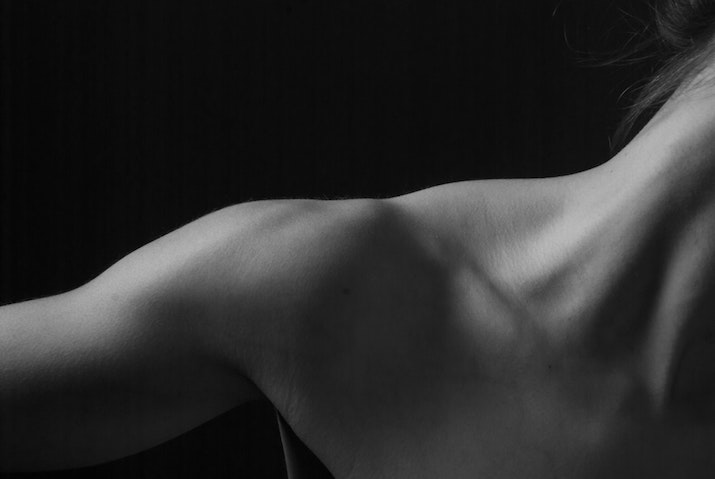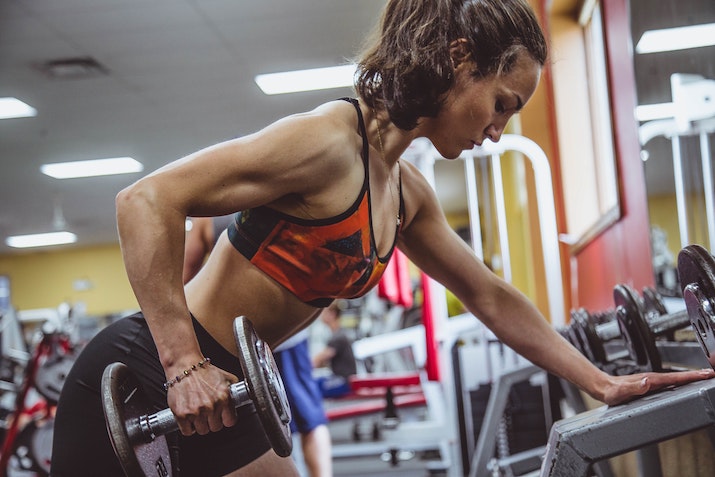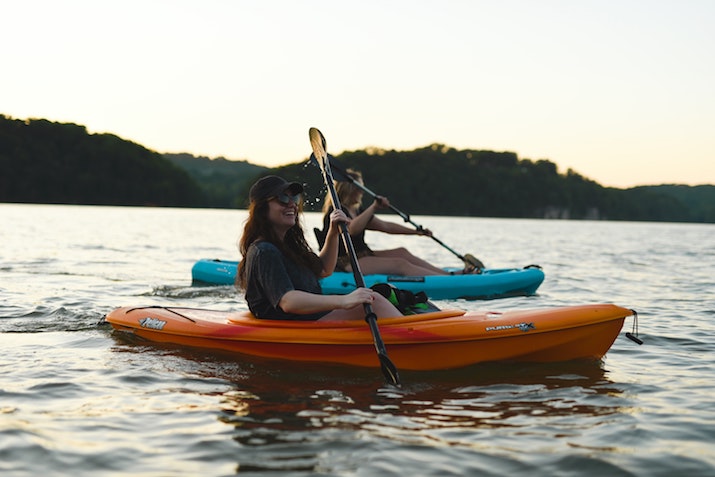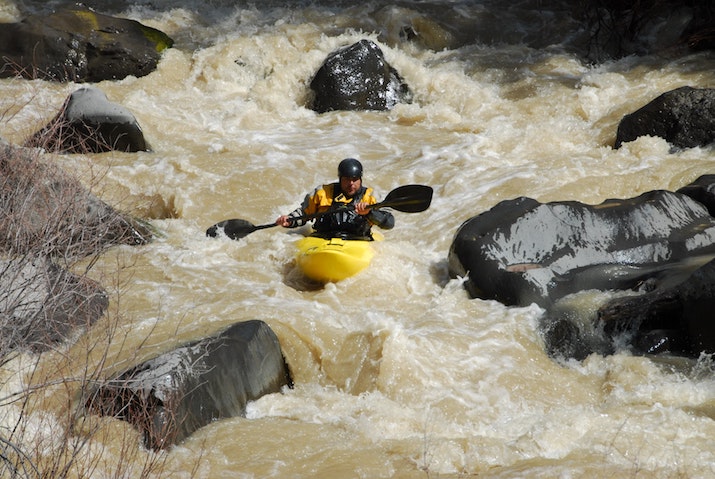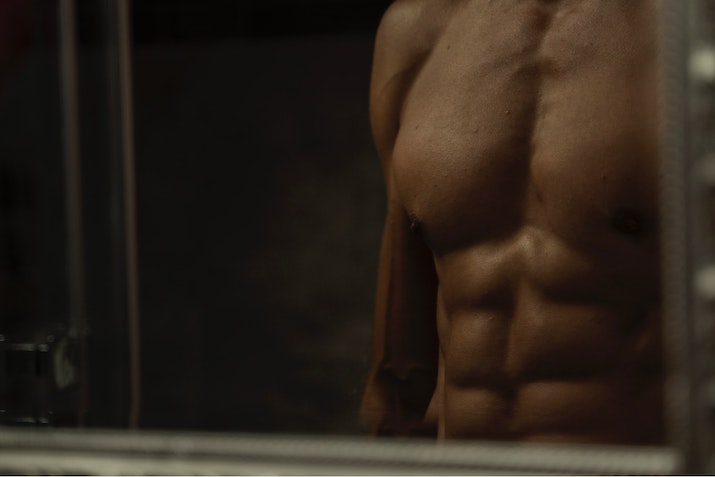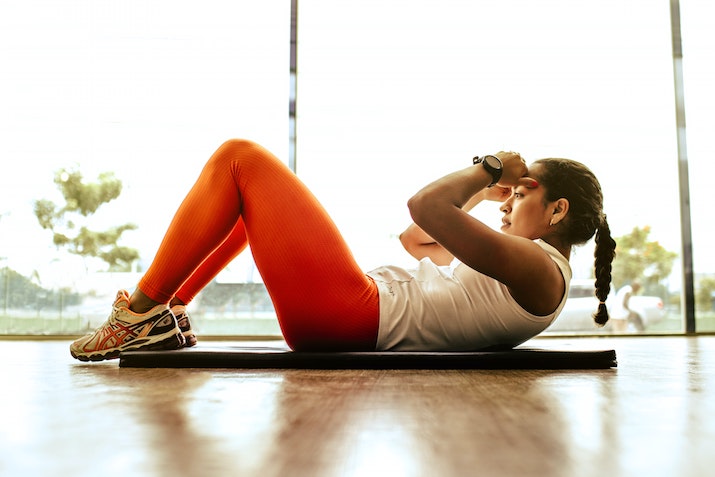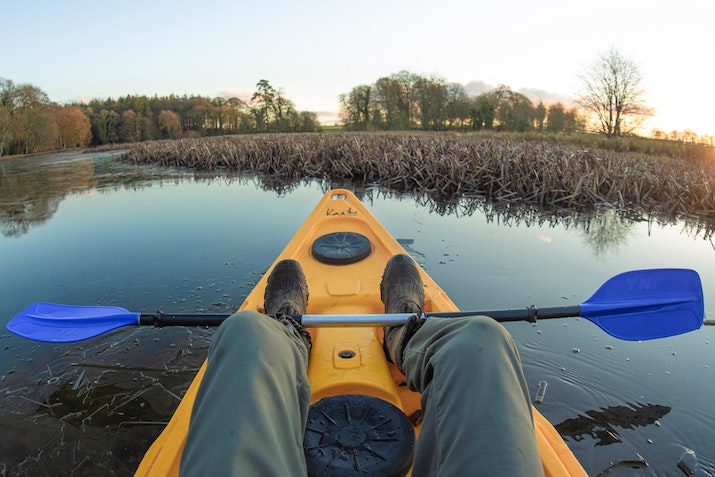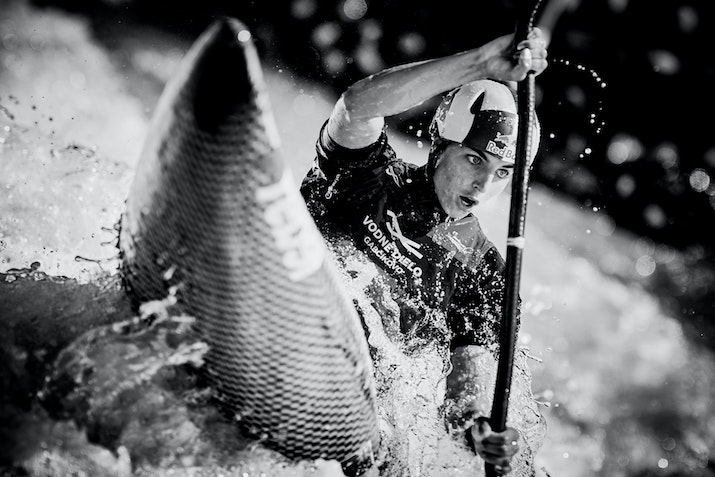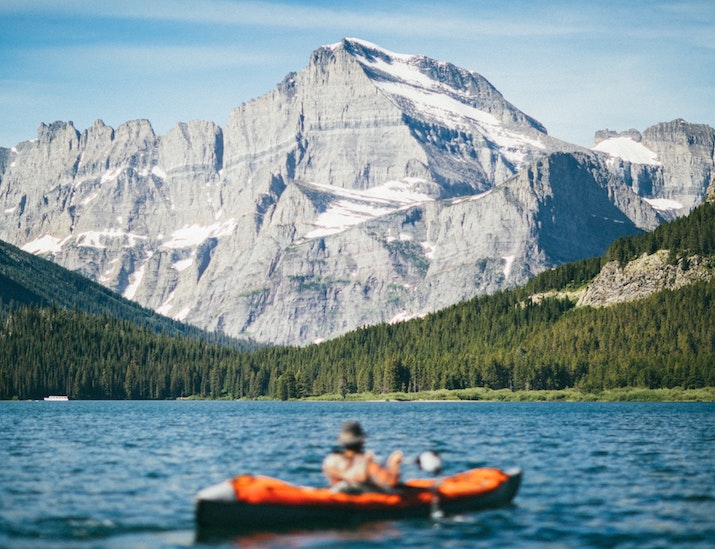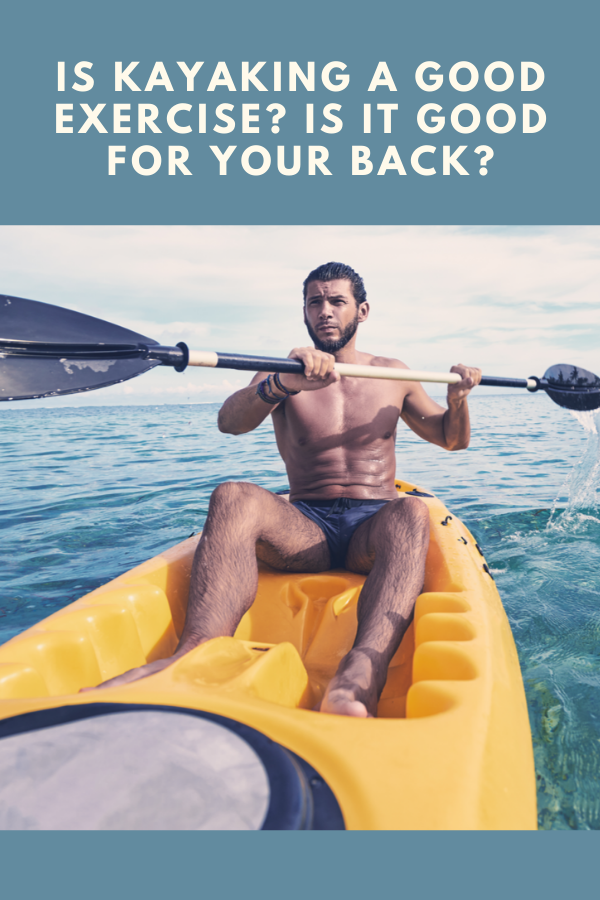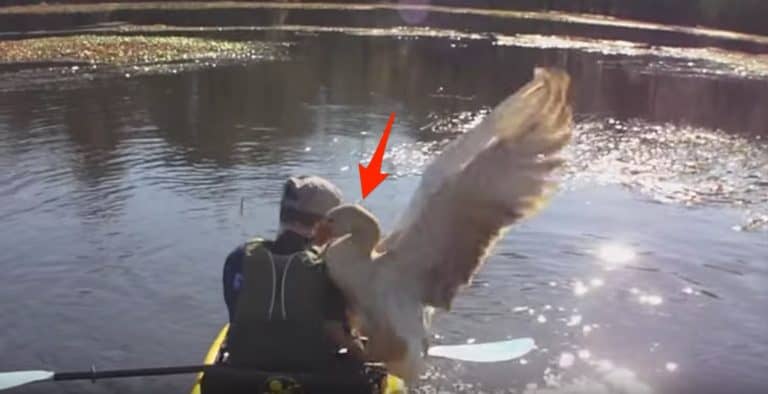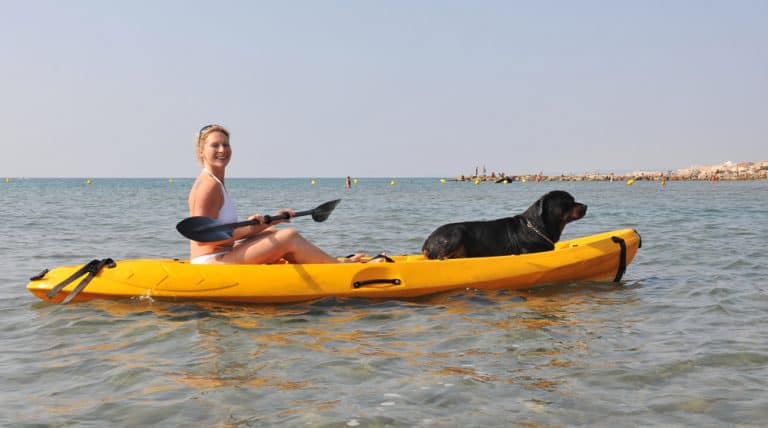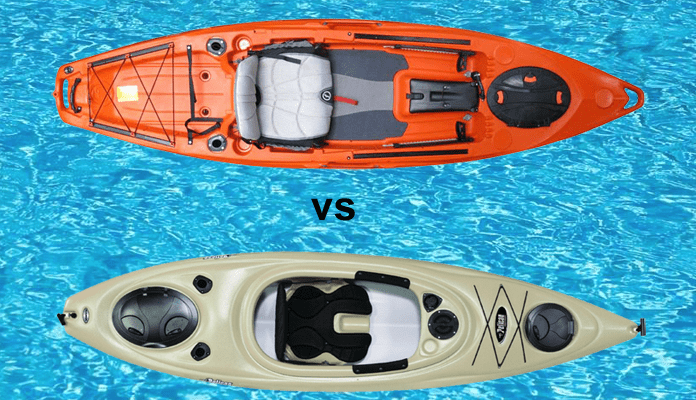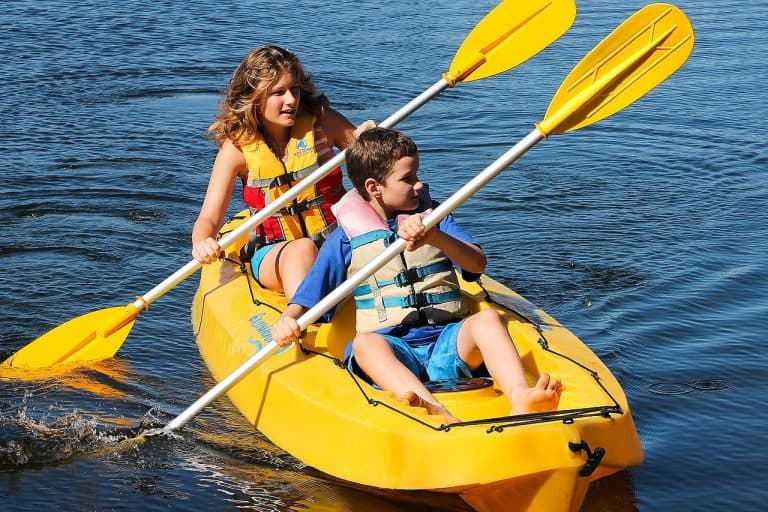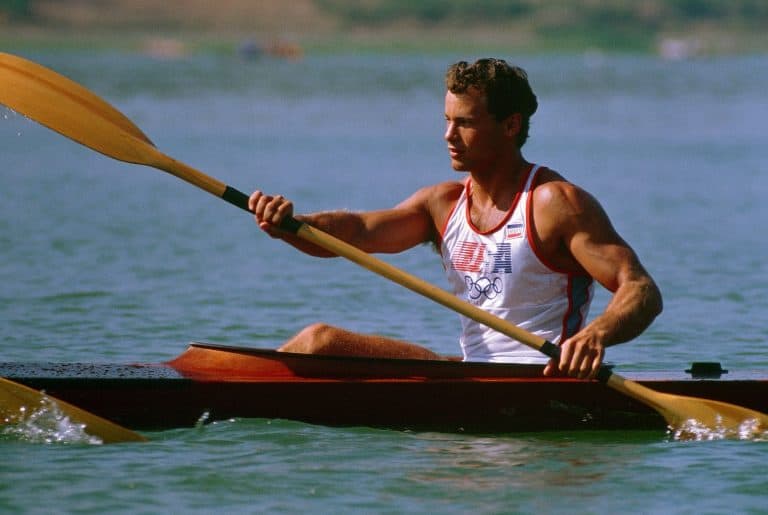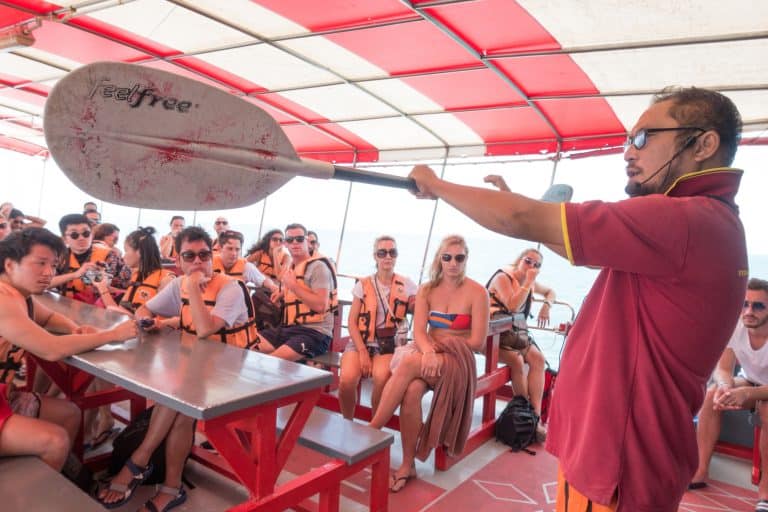We get how this can be a legitimate question. If you are only seeing kayaking pictures like the one above, it is easy to wonder: is kayaking good exercise?
Kayaking is, in fact, a great upper body workout. With the proper technique, it can help you build muscle in your abdomen, back, shoulders, and upper and lower arms.
The key there is proper technique. Kayaking is a good exercise if you are using proper form and, if you do not, you actually can risk injury to your back, arms, or core muscles.
That is why we recommend that beginners take a lesson to learn how to paddle a kayak. While you can read a lot about proper paddling techniques online, there is no substitute for having an in-person teacher critiquing your form and giving you pointers.
This is especially important for more rigorous forms of kayaking like whitewater kayaking and kayak surfing. The more technical your primary paddling activity becomes, the higher the risk of injury.
Fortunately, we are going to provide a bunch of tips in this guide to help you kayak safely and efficiently. We will also provide some insights into how you can challenge yourself to make kayaking an even more demanding exercise as your skills increase and your stamina grows.
Photo by Kalen Emsley on Unsplash
Is Kayaking A Good Workout?
Photo by Hatham on Unsplash
It absolutely can be! One of the best things about kayaking is that it can be as strenuous or relaxing as you desire.
If you just want to meander a little way along the coast and then sit in your kayak and relax, you absolutely can. If you want to time yourself and try to paddle 4-5 miles in under two hours, you can do that too!
You can also make your paddles as long or short in distance as you desire. It is also important to remember that different situations may call for different types of paddling adventures.
A casual afternoon paddle with friends may only cover a mile or two while your morning “workout” paddles may easily cover six miles in a couple of hours.
At the end of the day, you get to choose whether you look at kayaking as a workout or a recreational activity. It can either be a replacement, or a supplement, for your existing workout routine.
Is Kayaking Good Exercise For Back Pain?
Photo by Tatum Bergen on Unsplash
Back pain can be caused by a wide variety of things. It can be the result of an injury or it can manifest due to muscle tightness in other areas of the body (and those are just a couple of examples).
The question of whether kayaking is good exercise for back pain is a delicate one for a couple of reasons.
First, it can depend on the cause and severity of your back pain. If you can barely walk or struggle just to get into a kayak, for example, there may be more gentle exercises you should consider before kayaking.
On the other hand, kayaking can help to strengthen certain muscles that will combat back pain. We will discuss which muscles we are referring to later on, but let us first discuss more about kayaking’s impacts on your back.
The Iliopsoas and Its Role in Back Pain
Photo by ELC At UVic on Flickr
While kayaking isn’t a problem for your lower back (generally speaking), it does cause a certain area of your back to contract. That area is called the iliopsoas, which is actually the joined psoas and iliacus muscles.
In our abdomens, these muscles remain separate but they join in the upper thigh. Pain in this muscle usually starts in the front of your hips and can sometimes radiate down your thighs and into your knees.
If this muscle remains tightened and shortened for a long period of time, it can also cause pain in the upper buttocks and lower back.
How To Combat It
Photo by Oksana Taran on Unsplash
As with many chronic injuries, stretching is the remedy. No, you do not have to become an advanced yogi to have all of your back pain issues alleviated.
Even 5-10 minutes of stretching per day can work wonders for your body. As it relates to kayaking, however, your back and leg muscles can naturally tighten and contract while you are paddling.
So it is a good idea to work a regular stretching routine in your paddling adventures. This means stretching before and after your time on the water to keep your muscles loose and lean.
You might be surprised by how much delaying your paddle and stretching for five minutes can change how you feel when you are finished.
Conversely, do you really not have an extra five minutes after your paddle to stretch out before you hop in your car and race to your next activity?
When Do Most Kayak-Related Back Injuries Occur?
Photo by Nancy Regan on Flickr
In my experience, most kayak-related injuries actually occur when people are moving their kayak around on land. It may sound counterintuitive at first, but consider how much more effort it takes to move a kayak on land versus when it is floating in the water.
Lifting your kayak on and off your kayak roof rack and then carrying it down to the water’s edge puts significantly more strain on your back than you will experience when you are actually paddling.
This is true even if you choose one of the best easy load kayak roof racks!
Because of this, most experienced kayakers don’t actually call it quits because they can’t paddle anymore. Instead, they call it quits because their bodies can no longer handle the rigors of transporting a kayak safely.
The good news is that there are aids and ways around doing a lot of heavy lifting just to get your kayak to the water. Choosing one of the best kayak carts, trolleys, or wheels, for example, will eliminate having to carry your kayak altogether.
Does Kayaking Burn Belly Fat and Help With Weight Loss?
Photo by Joshua J. Cotten on Unsplash
It absolutely can! Most beginners think of kayaking as a relatively relaxed activity that only requires upper body strength.
Nothing could be further from the truth!
Kayaking is inherently a cardiovascular exercise that will allow you to burn somewhere between 400 and 500 calories per hour. This is true whether you are paddling casually or exerting maximum effort.
In addition, our core muscles are a really important part of proper paddling technique. With proper trunk rotation, your abdominal and oblique muscles generate most of the power behind your paddle stroke.
In addition to that responsibility, your core muscles will constantly be working to help you keep your balance inside your kayak. If you are new to the sport, you will quickly realize that this is the case.
It is not uncommon for new kayakers to feel like they have done a couple of hundred crunches after spending an hour or two on the water!
What Muscles Does Kayaking Work?
Photo by Raoul de Plessis on Unsplash
If you have paddled recently, you could probably feel exactly which muscles kayaking works. That is, of course, if you were using the right technique.
With proper technique, these are the muscles that kayaking should be working.
Back – Lats, Trapezius, and Rhomboids
Photo by Pete Nowicki on Unsplash
Okay, so this is actually a muscle group instead of just one muscle. The full list of muscles in your back that kayaking works include your lats, lower and upper trapezius, and rhomboids.
Your lats are the largest muscles in your back and they contract every time you execute a proper forward stroke. Energy is transferred from your lower body and through these muscles to help pull your arm back and toward your body.
Your rhomboids help to retract your scapula and this occurs right at the end of your forward paddle stroke. They pull your shoulder blades in towards each other and focusing on rhomboid contraction can actually be an important metric for good posture and proper kayaking technique.
Pro Tip: Upgrading to one of the best kayak seats is another way to improve your posture while kayaking!
Finally, your trapezius muscles work to move your shoulders up and down and also provide rotation and flexion for your neck and spine. Many kayakers overuse their upper trapezius muscles, so it is important to be aware of your middle and lower traps as well.
Shoulders – Posterior and Anterior Deltoids
Photo by Inge Poelman on Unsplash
This is the muscle that most people feel on fire after a few hours of kayaking. More specifically, your posterior deltoids are responsible for pulling the blade of your kayak paddle through the water on your forward stroke.
Because most kayakers spend more time going forward than backward, we call on our posterior deltoids much more heavily than their anterior cousins. This can lead to a muscular imbalance and put you at a higher risk of injury.
This is why many kayakers actually have to hit the gym (or find another activity) to work out their anterior deltoids as much as they do their posterior deltoids. Failing to do so will almost certainly result in injury for an experienced kayaker.
As a beginner, one way that you can help to avoid injury to your shoulders is to maintain a proper ”˜paddler’s box’ at all times. This refers to the rectangular shape that is created inside of your arms and the shaft of your paddle when you place the shaft on top of your head.
Shoulders – Rotator Cuff
Photo by Alora Griffiths on Unsplash
Your rotator cuff is actually comprised of four smaller muscles that work together to stabilize and provide rotation for your shoulders and upper arms. These muscles are called the supraspinatus, infraspinatus, teres minor, and subscapularis, respectively.
Kayaking can put a lot of strain on your rotator cuffs and many experienced paddlers train these muscles with regular internal and external rotation exercises to keep them fit and healthy.
Upper Arms – Biceps and Triceps
Photo by Christian Bowen on Unsplash
These are probably the muscles that you were hoping to sculpt when you first thought of getting into kayaking. The good news is that kayaking can definitely help you get stronger biceps and triceps.
It is probably a three-way tie between your arms, shoulders, and back when it comes to the most-used muscles during kayaking. Your biceps and triceps muscles, however, work in tandem, so there is no competition between them.
As you pull one blade on your kayak paddle towards you during a forward stroke, your bicep contracts in the pulling arm while the tricep contracts in the pushing arm (the opposite one).
This push-pull relationship is why the biceps and triceps are sometimes referred to as the ”˜Agonist-Antagonist’ pair. It is also the reason why both muscle groups receive an even, consistent workout when kayaking.
Forearms and Hands
Photo by Tom Spross on Unsplash
This is a muscle group that many new kayakers complain about. Their hands and fingers often become fatigued the fastest because of their responsibility to maintain contact with their kayak paddle.
I like to tell all of my first-time kayakers that there is no need to have a “white-knuckle” grip on your kayak paddle. You should keep your fingers loose and as relaxed as possible, especially as you begin to paddle long distances.
That being said, all of the power that is generated from your lower body, core, shoulders, back, chest, and arms is transferred to your kayak paddle through your forearms and your hands.
In addition to being a good workout for the rest of your body, this is why kayaking is also great for increasing your grip strength.
For beginners, avoiding wrist injuries is an important part of maintaining your fervor for kayaking. These injuries usually occur when your wrists are bent more often than they are straight while you are paddling.
Work on keeping your wrists locked and straight in comparison to your forearms. This will help to alleviate stress injuries like carpal tunnel syndrome.
Chest
Photo by Andre Taissin on Unsplash
While your shoulders and arms are working to pull one of your arms into your body, your chest muscles will be counteracting that motion and helping to push your other arm away from your body.
As a quick example, you can even sit in a seat and place one hand over the opposite chest muscle (left to right or right to left, it doesn’t matter). Then, gently rotate your torso to the same side as the chest muscle you are touching.
This rotation mimics the motion your core will be making while you are paddling. You should actively be able to feel your chest muscles contracting as your torso rotates.
Core – Abdominals and Obliques
Photo by Jonathan Borba on Unsplash
In my opinion, the core is the most heavily overlooked muscle group for beginner kayakers. There is a natural tendency to rely too heavily on your shoulders and upper arms when you are just learning how to kayak, which leads to those muscles fatiguing rather quickly.
The common misconception is that you need to lean over and apply more energy to your pulling motion in order to generate more power with your paddle strokes. In fact, the proper paddling technique involves a subtle rotation of the core (instead of a lean of the entire torso).
This motion is so subtle that you probably will barely notice your experienced kayaking guide doing it. He or she may not even be aware that they are doing it until you ask about trunk rotation during your lesson.
In addition to being the real power generators behind your paddle stroke, your abdominal and oblique muscles also work to stabilize your core and help you maintain balance in your kayak.
In many ways, your core muscles never stop working while you are kayaking. This is one of the primary reasons why kayaking can help you burn belly fat and lose weight.
Legs and Hips
Photo by Isaac Burke on Unsplash
This one may come as somewhat of a surprise to you because you rarely think about your lower body when you think of paddling a kayak. Your legs and hips, however, do a lot of work to help stabilize your core and transfer energy to your upper body when kayaking.
Proper kayaking form involves pushing your feet up against adjustable or molded-in footrests in your kayak’s cockpit. That point of contact between your feet and your kayak is where a proper kayaking stroke begins.
From there, energy is transferred up your legs, through your core, and into your back, shoulder, chest, and arm muscles. With proper technique, kayaking can easily become a full-body workout, not to mention the work that your legs and hips do when you begin to experiment with more advanced maneuvers like the lie-back technique.
Heart and Lungs
Photo by Jesse Orrico on Unsplash
Not everyone chooses to make it so, but kayaking can definitely be a cardio exercise if you choose. It is an especially good cardiovascular exercise for people recovering from lower-body injuries and studies have shown that you can burn up to 500 calories in one hour of kayaking!
The Importance of Good Kayaking Technique
Photo by Marian Trizuliak on Unsplash
Whether you are just going for a recreational paddle or running rapids in one of the best whitewater kayaks, paddling with good technique is essential. So let’s conclude by highlighting why proper kayaking technique is so important.
It Prevents Injury
The proper paddling technique will help you avoid overuse injuries. As you can see, kayaking is actually one of the most balanced exercises that you could do.
That being said, if you do not paddle with proper technique, you are at higher risk of injuring the muscle group that is working to compensate for your poor form.
It Reduces Fatigue
If you are only using your shoulders and upper arms to power your kayak, those muscle groups are going to get tired very quickly. If you improve your technique to incorporate the rest of your body, those muscles will not have to work so hard.
The underlying benefit of reducing your fatigue when kayaking is that you will be able to go for longer and explore more hidden locations. Only with proper kayaking form will you be able to run long river stretches or consider overnight paddling expeditions.
It Ensures Longevity
With any outdoor activity or workout regimen, we are much more likely to burn out if we are maintaining a balance. The good news is that kayaking in and of itself is a very balanced workout for your body.
If we don’t learn proper technique from the beginning, however, we risk injuring ourselves in such a way that prevents us from enjoying kayaking for many years to come!
Final Thoughts
Photo by Nitish Meena on Unsplash
Kayaking really is for everyone. There are so many ways you can adapt your seat or control your effort level so that you get exactly what you are looking for from your time on the water.
There are also so many different kayaks and types of kayak paddles out there for you to choose from. You can choose from the best recreational kayaks for casual paddling or the best touring kayaks for long-distance expeditions.
Plus, there are more and more ADA-accessible ramps out there these days. These ramps make getting in and out of your kayak so much easier, especially for seniors or people dealing with disabilities.
So there is really nothing stopping you from giving kayaking a try! Find your local kayak rental shop or guide company and get the local 411 on the best places to kayak in your area.
Then come back and drop us a comment to let us know about a new paddling destination in your neck of the woods!

